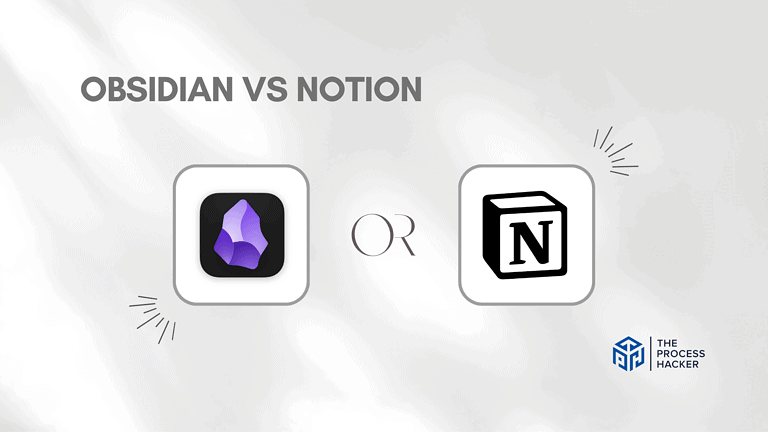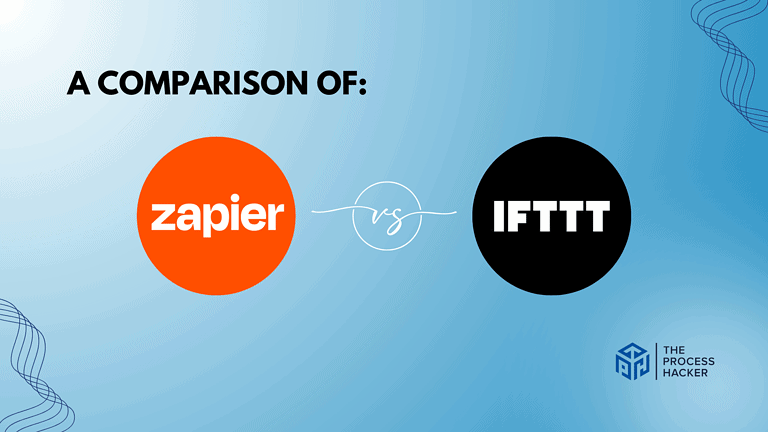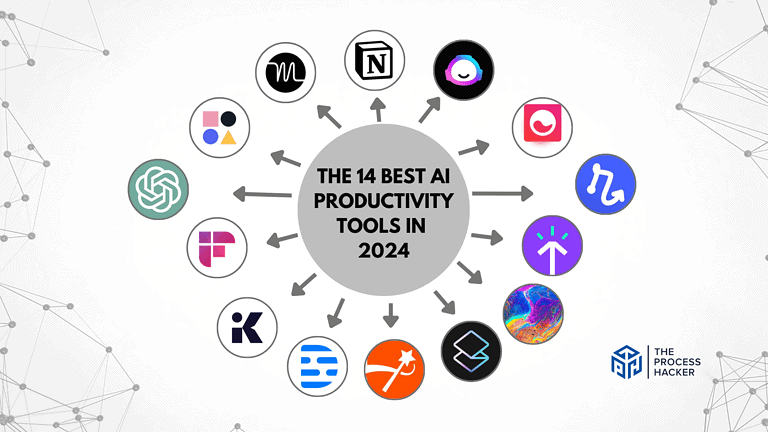How to Start a Project: A Comprehensive Guide for Business Leaders
Remember Elon Musk’s vision for SpaceX? It started as a bold idea, a dream that many dismissed as impossible.
Yet, through meticulous planning, unwavering determination, and a willingness to embrace innovation, Musk turned that dream into reality. SpaceX is now a significant player in the space industry, revolutionizing space travel and inspiring a new generation of innovators.
Your project might not be as ambitious as Elon Musk’s or colonizing Mars, but the principles remain the same. Successful project initiation requires a strategic approach, clear communication, and a focus on actionable steps.
In this comprehensive guide, we’ll walk you through every stage of the project initiation process, providing you with the tools and insights you need to transform your vision into a tangible reality.
What is Project Initiation?
Project initiation is the foundational phase of the project management life cycle. It’s where you set the groundwork, establish objectives, and mobilize resources to turn your vision into reality. This stage is critical because it determines the direction and scope of your entire project.
Think of project initiation as the blueprint for a building. Before laying the first brick, you need a detailed project plan that outlines the structure’s purpose, dimensions, and materials.
Similarly, before diving into a project, you need a clear roadmap that defines its goals, scope, and resources. This initial planning phase is called project initiation, and it’s the cornerstone of any successful endeavor.
During project initiation, you lay the groundwork for your project’s success. You define the project’s objectives, identify key stakeholders, assess potential risks, and secure the necessary resources. Think of it as the pre-flight checklist before takeoff. Without a thorough inspection, you risk encountering turbulence mid-air.
The importance of project initiation cannot be overstated. It sets the stage for the entire project lifecycle, ensuring everyone is on the same page and working towards a shared vision.
Remember the Sydney Opera House? Its construction was plagued by delays and cost overruns, partly due to inadequate planning during the initiation phase. The project took 14 years to complete and exceeded its budget by a staggering 1,400%. This serves as a stark reminder of the consequences of neglecting project initiation.
Why You Should Master Initiation in the Project Management Life Cycle?
Starting a project life cycle without proper initiation is like setting sail without a compass. You might drift aimlessly, encountering unexpected obstacles and squandering valuable resources. Mastering project initiation is not just beneficial—it’s essential for business success.
A well-executed initiation phase sets the stage for a smooth and successful project journey. It acts as a guiding star, ensuring everyone is aligned and working towards the same objectives. You’ll reap numerous benefits throughout the project lifecycle by dedicating time and effort to the initial planning. Let’s delve deeper into why mastering initiation is crucial:
- Ensures alignment with organizational goals: Project initiation helps you connect your project’s objectives with your organization’s broader strategic goals. This ensures that your efforts contribute to the bigger picture, maximizing the value you deliver.
- Saves time and resources in the long run: By identifying potential risks and challenges upfront, you can proactively address them, preventing costly delays and rework later in the project.
- Improves stakeholder buy-in and support: Engaging stakeholders early on fosters a sense of ownership and commitment, leading to increased support and collaboration throughout the project.
- Increases chances of project success: A well-defined initiation phase lays a solid foundation for your project, increasing its likelihood of achieving its goals on time and within budget.
- Provides a clear direction for the entire project management team: With a clear roadmap, everyone knows their roles and responsibilities, promoting efficiency and minimizing confusion.
Now that you understand the critical importance of mastering project initiation, let’s explore our comprehensive method for starting a project on the right foot. This step-by-step approach will empower you to navigate the complexities of project initiation confidently and ensure your projects are set up for success from the beginning.
How to Start a Project: The Ultimate 7-Step Guide for Business Leaders
To streamline your success, here’s a unique, seven-step guide designed to harness your leadership capabilities and effectively drive your projects to fruition.
1. Define Your Project’s Objectives
Setting clear and SMART (Specific, Measurable, Achievable, Relevant, and Time-bound) objectives is the cornerstone of project management success. These objectives provide you and your team with a clear direction and a benchmark for measuring progress. When your goals are well-defined, you can easily communicate the project’s purpose and scope to all stakeholders, ensuring everyone is on the same page.
Aligning your project goals with your company’s broader business strategy is essential. You’ll want to:
- Review your business strategy: Understand the long-term goals of your business to ensure that your project contributes positively.
- Identify synergies: Look for ways the project can enhance or support your business’s strategic objectives.
- Engage with key stakeholders: Regularly discuss the project’s alignment with the business strategy to ensure it adapts to any strategic shifts.
The Role of the Project Sponsor in Objective Setting
The project sponsor plays a pivotal role in the success of a project. As a business leader, if you’re sponsoring a project, your responsibilities include:
- Defining the vision and objectives: You are crucial in setting the project’s direction based on strategic business needs.
- Securing resources: Ensuring the project has what it needs in terms of budget, people, and tools is vital.
- Championing the project: Advocating for the project at the executive level to garner necessary support and visibility.
- Providing guidance: Offer ongoing support and decision-making assistance to keep the project aligned with its goals.
Starting a project with a solid foundation of clear objectives and strategic alignment sets the stage for success, ensuring that the efforts invested yield beneficial results for your business.
2. Assemble Your Dream Team
Building a high-performing team starts with identifying the skills and expertise required for your project. Review your project objectives, scope, and deliverables to determine the specific roles you need to fill. Once you have a clear picture of your ideal team, start the recruitment process.
Consider tapping into your existing network and contacting colleagues, former coworkers, and industry contacts. You can also leverage online platforms and professional recruiters to find talented individuals with the right skills and experience. During the interview process, focus on assessing technical skills and soft skills like communication, collaboration, and problem-solving abilities.
The Importance of Diverse Skills and Perspectives
A diverse team brings a wealth of knowledge, creativity, and innovation. Different perspectives can lead to better problem-solving, more creative solutions, and a richer understanding of your target audience. When assembling your team, look for individuals with diverse backgrounds, experiences, and skill sets.
Embrace diversity in all forms, including gender, race, ethnicity, age, and cultural background. Studies have shown that diverse teams outperform homogenous teams in innovation, decision-making, and overall performance.
Tips for Assigning Roles and Responsibilities
Once you have assembled your team, assigning roles and responsibilities is the next step to ensure everyone knows their specific tasks and how they contribute to the project’s objectives:
- Match skills to roles: Assign roles based on individual strengths and skills to maximize efficiency and satisfaction.
- Define responsibilities clearly: Each team member should clearly understand their responsibilities and deliverables. This clarity reduces overlaps and gaps in the team’s efforts.
- Set accountability: Establish mechanisms for accountability to ensure that commitments are met. This might include regular check-ins or updates at team meetings.
- Foster collaboration: Encourage a culture of collaboration and communication. Regular team-building activities and open communication channels can help maintain alignment and morale.
Assembling the right team is more than filling seats; it’s about creating a dynamic group that can work together towards a common goal. With the right people in place, you’re well on your way to seeing your project not just start but succeed.
3. Craft a Compelling Project Charter
A project charter is a vital document that outlines the scope, objectives, and participants involved in a project. It serves as a roadmap for all stakeholders and guides the project’s execution and control. The key components of a project charter include:
A comprehensive project charter typically includes the following elements:
- Project Title: A concise and descriptive title that captures the essence of your project.
- Project Statement: A clear and compelling statement that defines the project’s purpose and desired outcome.
- Objectives: A list of SMART objectives that outline what the project aims to achieve.
- Scope: A detailed description of what’s included and excluded from the project, ensuring everyone understands its boundaries.
- Deliverables: A list of the tangible products or services that the project will produce.
- Milestones: Key dates or events that mark significant progress in the project.
- Budget: An estimated budget for the project, including resources and expenses.
- Risks: An assessment of potential risks and challenges that could impact the project.
- Stakeholders: A list of key stakeholders and their roles and responsibilities.
- Project Manager: The designated individual responsible for overseeing the project.
- Approval Signatures: Signatures from key stakeholders indicating their agreement and support.
How to Write a Clear Project Statement
The project statement is the heart of your project charter. It’s a concise, one or two-sentence declaration that encapsulates the project’s essence. A clear project statement answers the following questions:
- What problem are we trying to solve?
- What opportunity are we trying to seize?
- What outcome do we want to achieve?
As project managers, the ability to craft a project statement that is specific, measurable, and inspiring matters. It should be clear enough to guide decision-making and motivate your team.
Tips for Gaining Approval from Key Stakeholders
Securing approval from key stakeholders is a crucial step in project initiation. Here are some tips to increase your chances of success:
- Engage stakeholders early on: Involve key stakeholders in the charter development process to gain their buy-in and address their concerns upfront.
- Tailor your communication: Adapt your message to each stakeholder’s interests and priorities. Highlight the benefits and value the project will bring to them.
- Be prepared to answer questions: Anticipate questions and concerns from stakeholders and have clear, concise answers ready.
- Present a compelling case: Use data, visuals, and storytelling to make a strong case for your project.
- Be persistent: Don’t give up if you don’t get approval right away. Address feedback, refine your charter, and try again.
By crafting a compelling project charter and gaining approval from key stakeholders, you’ll set your project on a path to success. This formal document serves as a reference point throughout the project lifecycle, ensuring everyone stays aligned and focused on achieving the desired outcome.
4. Conduct a Thorough Feasibility Study
A feasibility study is a critical analysis that assesses the practicality of a proposed project or system. It helps determine whether the project is likely to succeed or not. The steps involved in conducting a thorough feasibility study include:
- Define the Scope of the Study: Clearly delineate the boundaries of the study, what it will cover, and the specific questions it aims to answer.
- Conduct Preliminary Analysis: Gather initial data and perform a preliminary analysis to see if further investigation is warranted.
- Develop Criteria for Success: Establish what criteria will define the project’s success. These could include financial, operational, technical, and legal standards.
- Gather Data: Collect detailed data about all aspects of the project, including market conditions, operational requirements, legal requirements, and technical aspects.
- Analyze Data and Develop Alternatives: Analyze the data to identify potential solutions or alternative approaches to achieving the project goals.
- Evaluate Alternatives and Make a Recommendation: Assess each alternative against the success criteria. This will involve weighing up the pros and cons, costs, and benefits of each option.
Assessing Project Viability and Potential Risks
To determine the financial viability of your project, evaluate whether the projected costs align with the expected returns. This assessment will help you understand if the financial aspects of the project justify its implementation and potential return on investment.
Assess the availability of technical resources, such as the necessary skills and technology, to successfully deliver the project. This step ensures that you have or can procure the technical capabilities needed to meet the project’s demands without encountering insurmountable obstacles.
Examine whether your organization’s current operations can support the new project without significant disruption. This involves analyzing how the project will integrate with existing workflows and systems and determining if your current operational setup is robust enough to accommodate the project’s requirements.
Ensure that the project will comply with all relevant laws and regulations. This is crucial to avoid legal issues that could arise during or after the project’s implementation, potentially derailing it or causing financial and reputational damage.
Tips for Presenting Feasibility Findings to Decision-Makers
When presenting your feasibility findings to decision-makers, focus on summarizing the most critical aspects of the study. Highlight how the project aligns with strategic business objectives to underscore its relevance and potential benefits.
Utilize visuals such as charts, graphs, and tables to clarify and enhance the presentation of your data, making your points clearer and more compelling. Be transparent about potential risks and how they can be mitigated. Decision-makers will appreciate a realistic assessment that considers all possible outcomes.
Finally, end with a clear recommendation based on your findings, providing justifications for why the project should or should not proceed. This structured presentation of the feasibility study helps to inform decision-making and significantly increases the likelihood of your project’s success.
5. Identify and Engage Stakeholders
Stakeholders are the individuals or groups who have a vested interest in your project’s outcome. Their influence can make or break your initiative, so it’s crucial to identify and engage them early on.
Explain the importance of early stakeholder identification
Early stakeholder identification allows you to proactively address potential conflicts, build alliances, and leverage their expertise. Ignoring stakeholders can lead to unexpected roadblocks, delays, and even project failure.
Discuss strategies for stakeholder analysis and engagement
To effectively manage stakeholders, it’s crucial to understand their perspectives, interests, and potential impact on your project. Conduct a thorough stakeholder analysis to map out their relationships and identify potential risks and opportunities.
Once you have a clear understanding of your stakeholders, tailor your engagement strategies to their specific needs. Keep them informed, solicit their feedback, and address their concerns in a timely and transparent manner.
Provide tips for managing stakeholder expectations
Managing stakeholder expectations is an ongoing process. Set realistic goals and communicate them clearly.
Regularly update stakeholders on project progress and proactively address any challenges or setbacks. By fostering open communication and building trust, you’ll increase stakeholder buy-in and pave the way for a successful project outcome.
6. Develop a Preliminary Project Scope
With your stakeholders identified, it’s time to define the project’s boundaries. This is where you’ll establish what your project will accomplish and, equally important, what it won’t.
Explain the components of a project scope statement
A project scope statement acts as the project’s constitution, outlining its goals, deliverables, constraints, and assumptions. Think of it as your roadmap, guiding you and your project team members throughout the project’s journey. Key components include:
- Project objectives: Clearly articulate what you intend to achieve.
- Deliverables: Specify the tangible outcomes your project will produce.
- Constraints: Identify any limitations, such as budget, time, or resources.
- Assumptions: Document any factors you’re assuming to be true.
Discuss techniques for defining project boundaries and deliverables
To avoid mission creep, it’s crucial to define clear boundaries for your project. This involves establishing what’s in scope and, just as importantly, what’s out of scope.
Use techniques like brainstorming and mind mapping to explore potential deliverables and identify any dependencies. Engage with stakeholders to ensure their needs and expectations are aligned with your vision.
Provide tips for avoiding scope creep
Scope creep is the gradual expansion of a project’s scope beyond its original boundaries. It’s a common pitfall that can lead to delays, budget overruns, and even project failure. To avoid scope creep:
- Establish a change control process: Any proposed changes to the project scope should be carefully evaluated and documented.
- Communicate effectively: Ensure everyone involved understands the project’s scope and any changes that are made.
- Be proactive: Anticipate potential risks and address them before they escalate.
By developing a well-defined project scope, you’ll set the stage for a successful and controlled project execution.
7. Host a Kickoff Meeting That Inspires
The kickoff meeting marks the official start of your project. It’s your chance to set the tone, energize your team, and build momentum. A well-executed kickoff meeting can lay the foundation for a successful and collaborative project journey.
Outline the key elements of an effective project kickoff meeting
An effective kickoff meeting should include:
- Introductions: Give team members the opportunity to get to know each other.
- Project overview: Provide a clear and concise overview of the project’s objectives, scope, and timeline.
- Roles and responsibilities: Clarify each team member’s role and responsibilities.
- Communication plan: Establish communication channels and protocols.
- Q&A: Allow time for questions and discussion.
Discuss strategies for energizing and aligning the project team
The kickoff meeting is an opportunity to build excitement and enthusiasm for the project. Share your vision, highlight the project’s potential impact, and emphasize the team’s collective contribution. Foster a collaborative environment where everyone feels valued and empowered.
Provide tips for setting the right tone for project success
The kickoff meeting sets the stage for the entire project. Create a positive and inclusive atmosphere where everyone feels motivated and engaged. Celebrate the team’s strengths, acknowledge potential challenges, and express confidence in their ability to achieve success.
Key Considerations for Successfully Starting a Project
To start a project effectively, you’ll want to define your goals and understand the resources available clearly. It’s crucial to align your project objectives with your business strategy to ensure that every effort contributes directly to your organization’s growth and efficiency.
Establishing clear communication channels and setting realistic milestones are also vital steps that help maintain project alignment and momentum.
Leveraging Project Management Software
Project management software like Notion or ClickUp is indispensable for modern businesses. These tools offer streamlined interfaces for task management, real-time collaboration, and progress tracking, which enhance team productivity and project transparency.
For different project types, consider tools like Notion for workflow management or Jira for more complex software development projects. Trello offers a more visual approach, suitable for smaller teams or projects requiring less detailed task management.
Choose a tool that integrates well with your existing systems and matches your project complexity. Ensure it supports your team’s size and is scalable for future needs. Training and support from the software provider are also crucial to help your team adopt the tool effectively.
Embracing Agile Methodologies in Project Initiation
Agile project management methodology supports flexibility and rapid iterations, which can be highly beneficial in today’s fast-paced business environments. By integrating Agile practices, such as sprints and stand-ups, into your project initiation, you can enhance responsiveness and adaptability.
This approach allows your team to adjust plans quickly to meet changing requirements and stakeholder feedback, which can lead to better project outcomes and more efficient use of resources.
Start with core Agile practices and adapt them to fit your organizational culture and project needs. Regular retrospectives and continuous feedback loops are essential to refine these processes over time.
Taking it to the Next Level: How to Optimize Your Project Initiation Phase
Utilize project management templates and governance project management framework to streamline initiation. Leverage tools like project portfolio management (PPM) to align projects with business goals strategically.
Integrate AI tools to automate data collection and analysis, providing insights that can predict project outcomes and optimize resource allocation.
Implement a culture of Kaizen, or continuous improvement, where feedback and data drive the evolution of project processes. Encourage a mindset of experimentation and learning within your team.
Alternatives to Traditional Project Initiation
Below are some methodologies that can offer flexibility and drive efficiency, ensuring that projects not only kick off on the right foot but also continue to evolve effectively in response to real-world feedback and challenges:
1) Lean Startup Methodologies
These encourage you to develop a minimal viable product (MVP) and use customer feedback to iterate. This approach can significantly save time and resources, making it ideal for projects in dynamic market conditions. By focusing on what the customers actually need, teams can avoid costly and time-consuming reworks and ensure that the product evolves based on direct market input.
2) Design Thinking Approaches
Focus on user experience and iterative design, which can foster innovation and adaptability. This is particularly useful in projects requiring creative solutions. Design thinking encourages deep user understanding through empathy, which can lead to more effective and personalized solutions that are better aligned with user needs and expectations.
3) When to Consider Alternative Approaches
If traditional project management feels too rigid or slow, these alternatives can introduce flexibility and foster a more adaptive project environment. These methods are particularly beneficial in environments where rapid technological and market changes can render traditional approaches less effective. By adopting these alternatives, teams can be more responsive and proactive in their project execution.
Final Thoughts on Starting Projects
Starting a project doesn’t have to be daunting. By following this comprehensive guide, you’ll be equipped with the knowledge and tools to initiate projects that are set up for success from day one.
Remember, the key to effective project initiation is clear communication, thorough planning, and strategic alignment with your business goals. As a business leader, your role in setting the tone and direction during the project initiation phase is crucial.
By mastering these techniques, you’ll improve your project management skills and inspire your team to achieve extraordinary results. So, what are you waiting for?
It’s time to implement these strategies and watch your projects soar to new heights. Your next successful project starts now!







